- Accept cash, credit cards, store credit, online payment processors, Zippay, and custom payments
- Use multiple payment methods for one order and accept partial payments
Complete inventory and POS system for clothing stores for new entrepreneurs
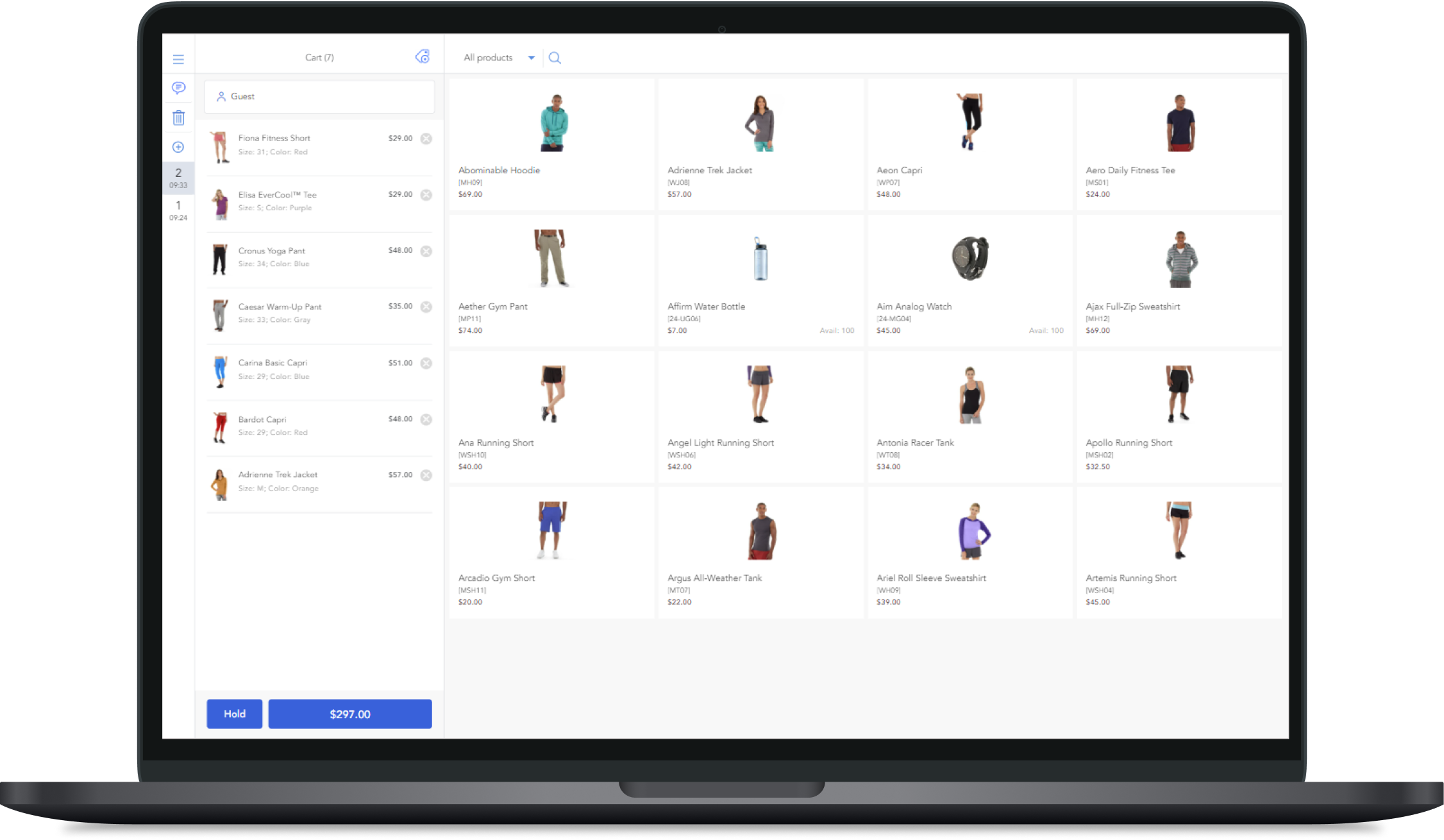
Stay on top of your inventory
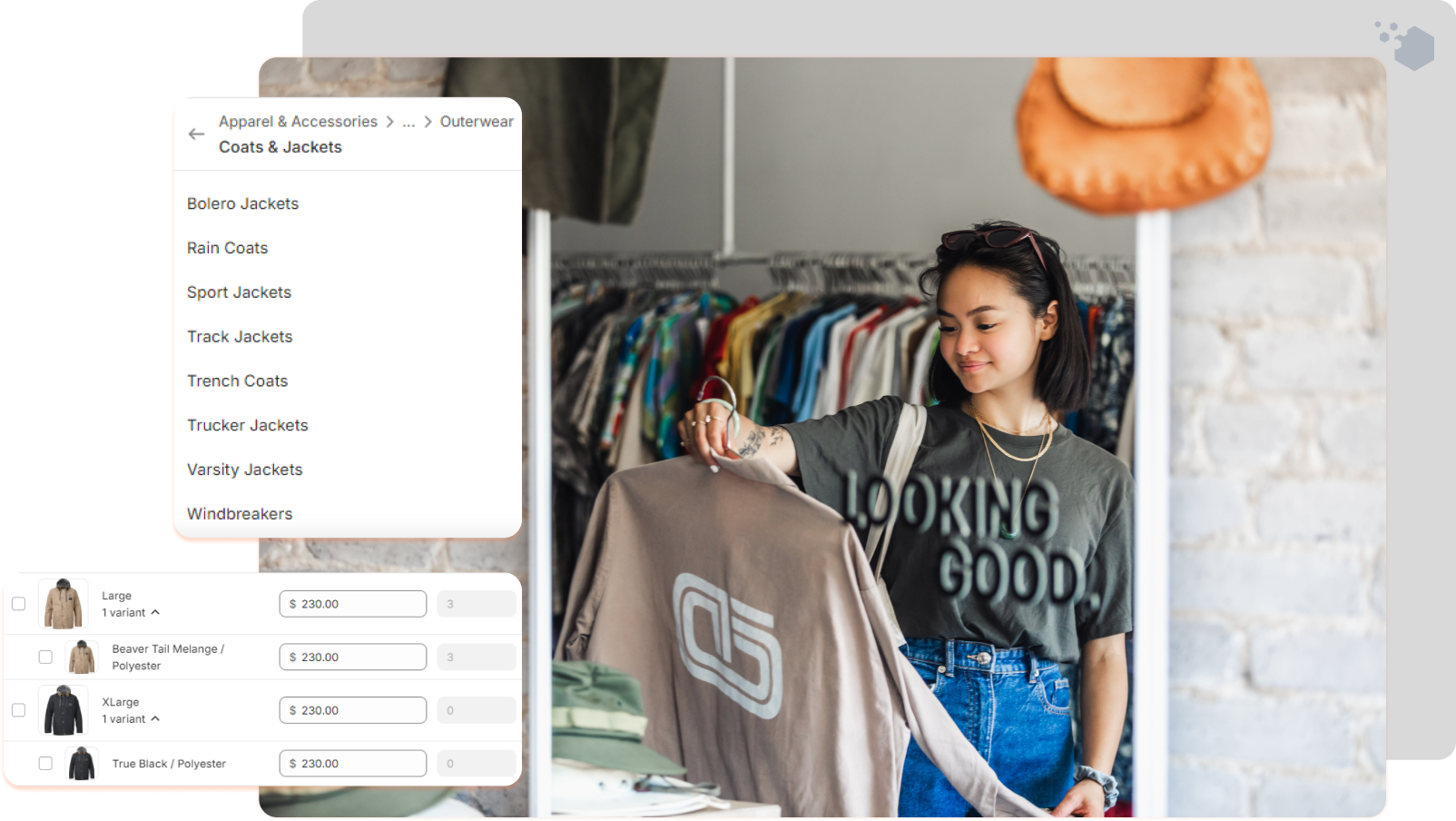

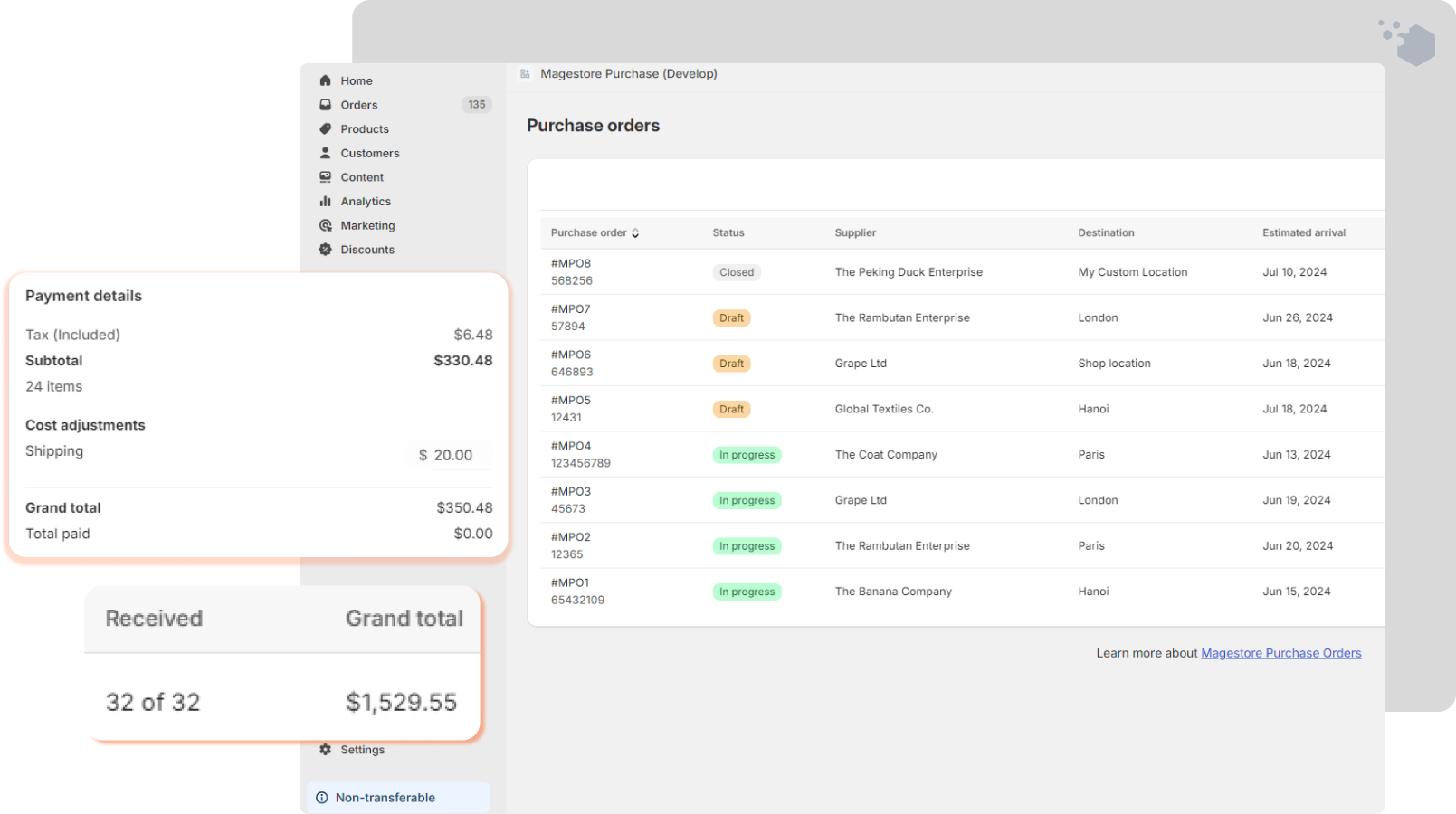

Sell where your customers shop with the world’s best eCommerce platform
- Expand your online presence by selling on your website, marketplaces, Facebook, and Instagram
- Cut shipping costs and delivery times with the buy online, pick up in-store option
- Save time on admin tasks by managing orders from all sales channels on a single screen

Accept payments any way your customers want, with minimal costs to your business
Support various payment methods
Reduce payment processing fees
Cut costs by choosing payment processors suited to your sales volume, saving money on processing fees
Accept most currencies in the world
Easily accept your local currencies

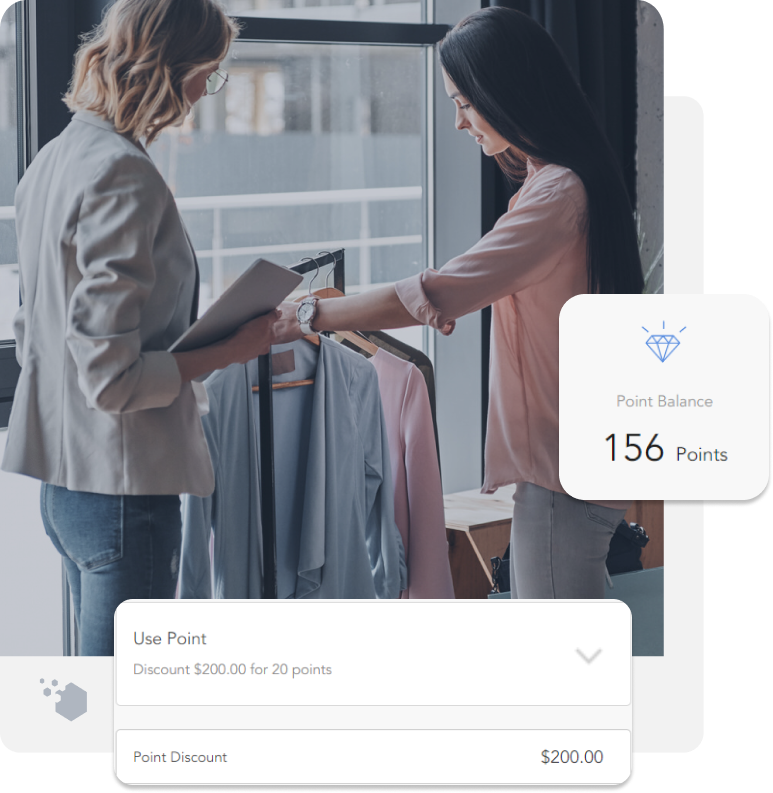
Keep shoppers coming back with reward points
- Reward shoppers with points they can redeem both online and in-store
- Offer points for actions like signing up, placing orders, leaving reviews, following on social media, and more
Save on hardware costs
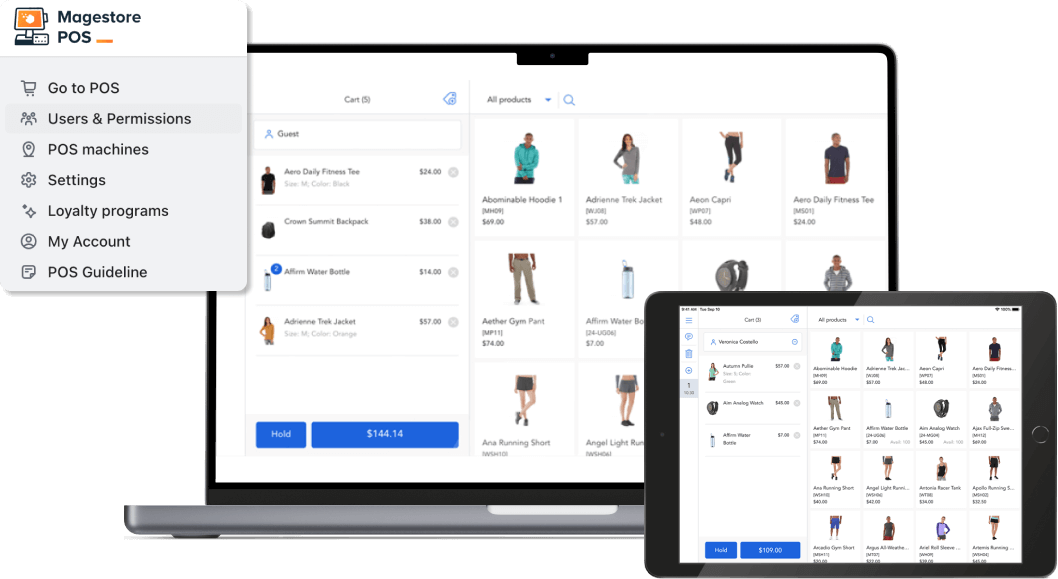
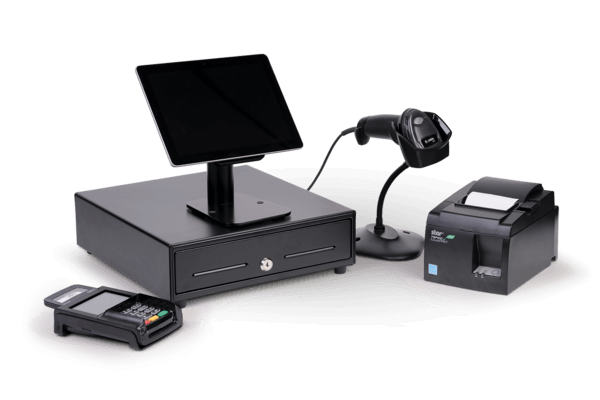
Fast checkouts
Process more transactions in less time, maximizing revenue during peak hours

Staff management
Monitor individual employee performance and sales to tailor training and development strategies

Barcode management
Reduces labor costs associated with manual inventory checks and price updates

Plug & Play
Choose and pay for the features you need, when you need them.
Tailor your POS system for clothing stores to your business needs with our plug-and-play approach. Choose and subscribe to additional apps as you grow, saving costs by paying only for the features you need.
Plans for your store’s development stage
Lite
$ 15
Per month (1 location only)+$65/month for inventory and eCommerce- Staff management
- Staff role management
- Multiple POS machines per location
- Simple checkout process
- Receipt printing
- Refund order
- Unlimited payment methods
Multi-locationSession managementReceipt customizationHold ordersMultiple cartsGift cardsReceipt printing/emailingRefund orderPickup items for online ordersCancel orderReorderExchange orderDenomination managementAutomatic discountLoyalty programsIntegrate with online shipping methodsOffline mode (coming soon)Translation
StandardRecommended
$ 50
Per Month/Per Location+$65/month for inventory and eCommerce- Staff management
- Staff role management
- Multiple POS machines per location
- Simple checkout process
- Receipt printing
- Refund order
- Unlimited payment methods
- Multi-location
- Session management
- Receipt customization
- Hold orders
- Multiple carts
- Gift cards
- Receipt printing/emailing
- Refund order
- Pickup items for online orders
- Cancel order
- Reorder
- Exchange order
- Denomination management
- Automatic discount
- Loyalty programs
- Integrate with online shipping methods
- Offline mode (coming soon)
- Translation
Trusted by
top fashion brands 15k businesses
Frequently asked questions
What tools do I need to operate a brick-and-mortar clothing store if I have just started out?
To get started, you’ll need a few key tools.
First, a POS system to handle sales and transactions.
Then, an inventory system to keep track of your stock.
You’ll also need a payment processor to accept card payments, and a barcode scanner to make checkout faster and easier.
If you also sell online, make sure your POS and inventory systems can connect to your online store.
What is the best eCommerce platform for selling clothing?
Shopify is a great choice for selling clothing. Many find its templates, particularly the paid ones, offer a professional aesthetic. Its backend analytics provide detailed insights, and it includes convenient features like built-in tax reports. Additionally, it integrates smoothly with various services such as Klaviyo and social media platforms.
What's the hardest part of running a clothing brand?
Estimating the right number of units for each size and design, often months before a season begins, is crucial. Predicting and adapting to trends well in advance adds another layer of complexity.
Additionally, handling quality control issues and ensuring proper fit are ongoing concerns. Dealing with unsold or out-of-season inventory further complicates the process.
However, solutions like Magestore’s POS system for clothing stores can greatly assist merchants in addressing these challenges.
How do I keep my online and physical location inventory in sync?
The simplest way is to manage both your online and physical stores using the same account.
Magestore’s POS system for clothing stores does just that. It connects to Shopify, making sure your inventory stays the same for both your online and in-store sales.
How much inventory should I have in starting a clothing boutique?
Start with minimal inventory. Determine your top-selling items first, which can vary depending on factors like location and pricing. Suppliers can offer insights, but they may not be precise.
Once sales begin, prioritize restocking your best-performing items. As your business grows, you’ll develop a better sense of demand.
Managing cash flow is crucial early on, as excessive inventory can tie up funds. Keep detailed records of inventory history to identify trends. For accurate analysis, consider factors like available inventory when assessing sales performance.
Understanding sell-through rates is vital for refining your strategy. During the initial stages, it’s easy to overlook inventory data amidst operational tasks, but capturing this information is key.










